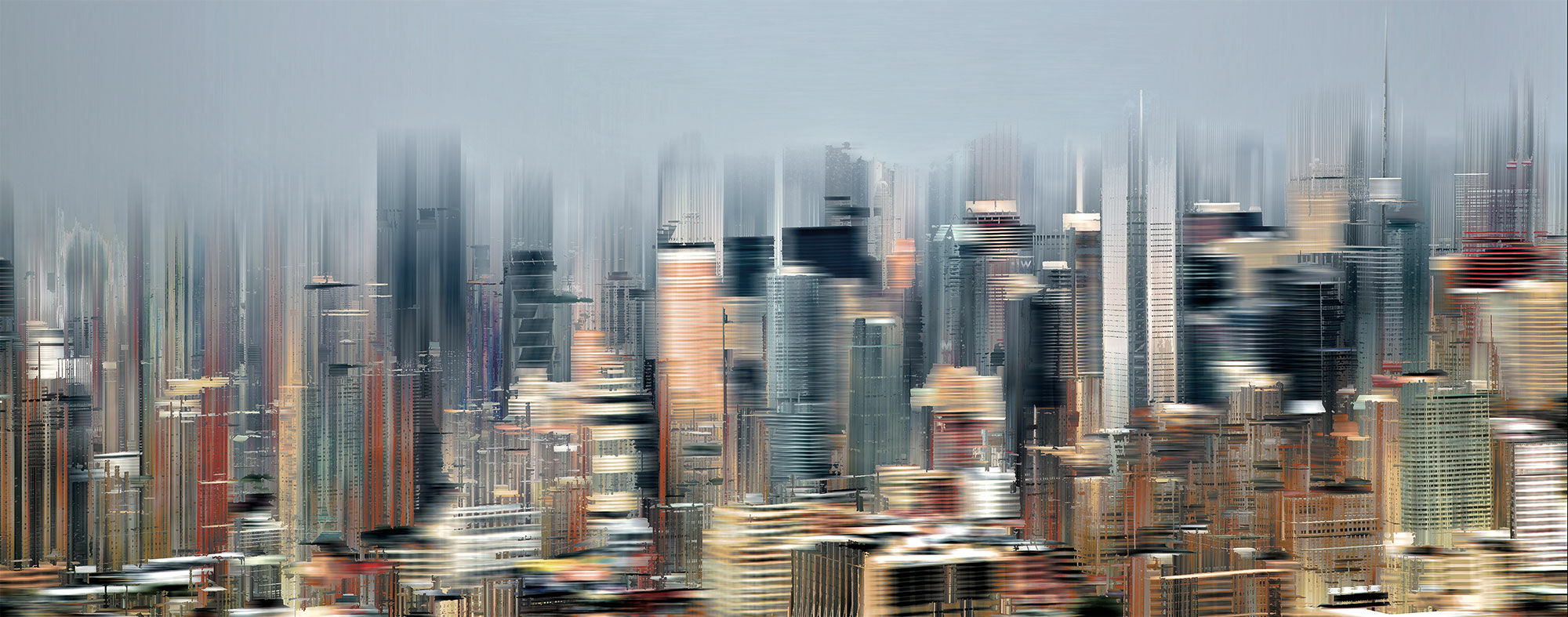Picture "New York I" (2007)


Picture "New York I" (2007)
Quick info
limited, 6 copies in total | photo laminated behind acrylic | size 55 x 140 cm (h/w)
Detailed description
Picture "New York I" (2007)
Sabine Wild's work shows her very own perspective on the architecture of metropolises, such as New York City. The photograph is only the beginning because afterwards, Wild digitally edits the photo, blurs the contours, varies the colours and adds vertical and horizontal stripes and lines. The digital editing creates the impression of the buildings being disassembled into individual parts - and yet the typical character of the motif is never lost.
Photo laminated behind acrylic, 2007. Limited edition 5 copies + 1 A.P. copy. Size 55 x 140 cm (h/w).

About Sabine Wild
Sabine Wild was born in 1962 in Padua, Italy, and graduated from different German universities such as Bielefeld, Münster, Cologne and Berlin with a Master of Arts. She is a photographer par excellence. A connoisseur of her oeuvre describes her as following: "What Sabine Wild develops concerning formal solutions and impressionistic resolutions, dematerialisations and plays of light, is decorative in the best sense. Sabine Wild is in the process of creating a new art movement, closely related to photography but charged with the strengths of painting."
Between reality and fiction: Sabine Wild presents with her works her very own perspectives on, for example, the architecture of metropolises such as New York, Shanghai, Hong Kong, Berlin or Dubai. A photograph is always just the beginning for her fascinating city portraits because Wild then digitally modifies the photos, blurs the contours, varies the colours and adds vertical and horizontal stripes and lines. The digital editing almost makes it seem as if the buildings have been disassembled into individual parts – and yet she never loses the typical character of the motifs.
A process for producing images by the action of light, which became widely known in 1839. Photography quickly became the basis for the expanding image industry that pushed the manually produced pictures, paintings and drawings into the background.
The avant-garde painting adopted photographic form elements, to ensure its painting validity. In the 1920s, many avant-garde painters devoted themselves to photography. With his photographs and photomontages, the American painter Man Ray developed new means of expression in modern art, the so-called "rayographs".
The Pop Art of the 1960s varied and alienated the public photograph with the help of technical means. The American pop artist Andy Warhol (1928 - 1987) is the most famous master of this art movement with his images and image series created in this way.


